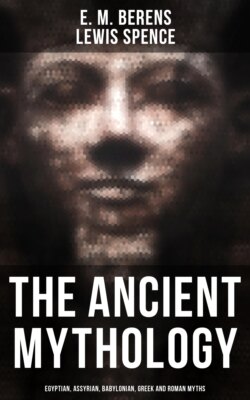Читать книгу The Ancient Mythology: Egyptian, Assyrian, Babylonian, Greek and Roman Myths - Lewis Spence - Страница 68
На сайте Литреса книга снята с продажи.
Lang on the Esther Story
ОглавлениеCommenting on this theory, Lang in his Magic and Religion (p. 161) says: "The name Mordecai resembles Marduk, Esther is like Ishtar, Haman is like Humman, the Elamite god, and there is a divine name in the inscriptions, read as resembling 'Vashti,' and probably the name of an Elamite goddess. Thus the human characters in Esther are in peril of merging in Babylonian and Elamite gods. But, lest that should occur, we ought also to remember that Mordecai was the real name of a real historical Jew of the Captivity, one of the companions of Nehemiah in the return from exile to Jerusalem. Again, Esther appears to me to be the crown-name of the Jewish wife of Xerxes, in the Book of Esther: 'Hadassah, that is Esther.' In the Biblical story she conceals her Jewish descent. Hadassah, says Nöldeke, 'is no mere invention of the writer of Esther.' Hadassah is said to mean 'myrtle bough,' and girls are still called Myrtle. Esther appears to have been an assumed name, after a royal mixed marriage. Now if a real historical Jew might be named Mordecai, which we know to be the case, a Jewess, whether in fact, or in this Book of Esther, which, says Dr. Jastrow, 'has of course some historical basis,' might be styled Esther.... But, if Mordecai be, as it is, an historical name of a real Jew of the period, while Esther may be, and probably is, a name which a Jewess might bear, it is not ascertained that Vashti really is the name of an Elamite goddess. Yet Vashti is quite essential as a goddess to Mr. Frazer's argument. 'The derivation,' he says, 'of the names of Haman and Vashti is less certain, but some high authorities are disposed to accept the view of Jensen that Haman is identical with Humman or Homman, the national god of the Elamites, and that Vashti is in like manner an Elamite deity, probably a goddess whose name appears in inscriptions.'"
It is thus seen that the facts regarding these names make such an explanation as is advanced by Sir James Frazer rather a hazardous one. Haman, according to his theory, would represent the dying god, whilst Mordecai would play the part of the re-risen god of vegetation. Lang puts forward a counter-theory, and that is that Haman or Humman was a conquering god of the Elamites, which accounts for him having been whipped and hanged in derision. This Humman was, he thinks, possibly an Elamite god of vegetation.
